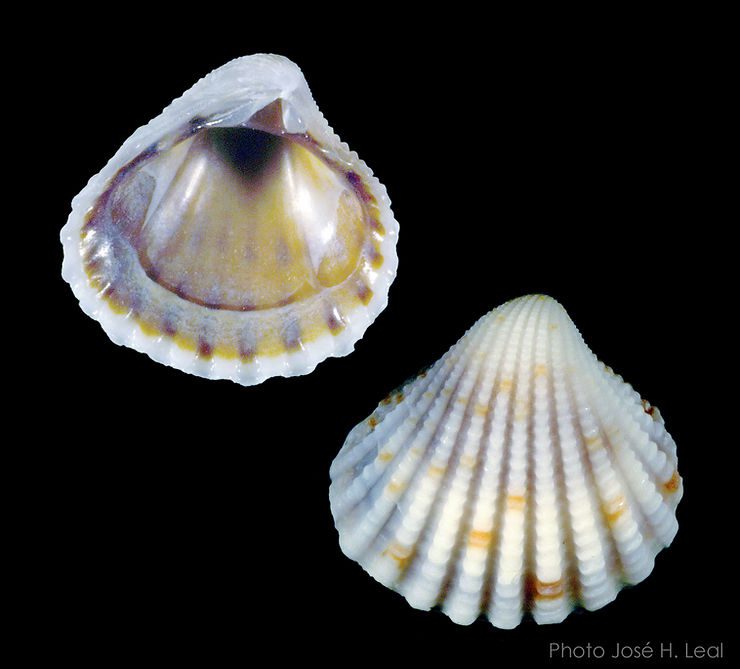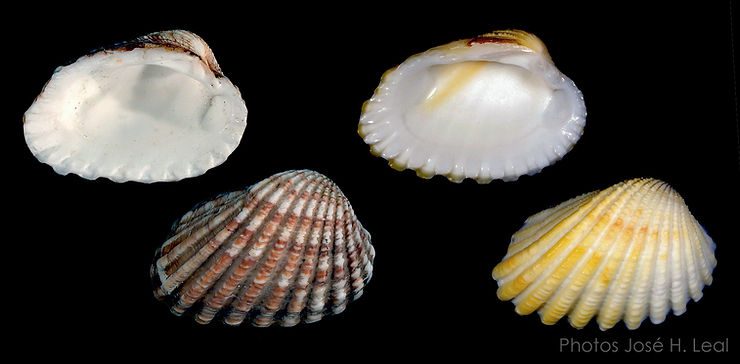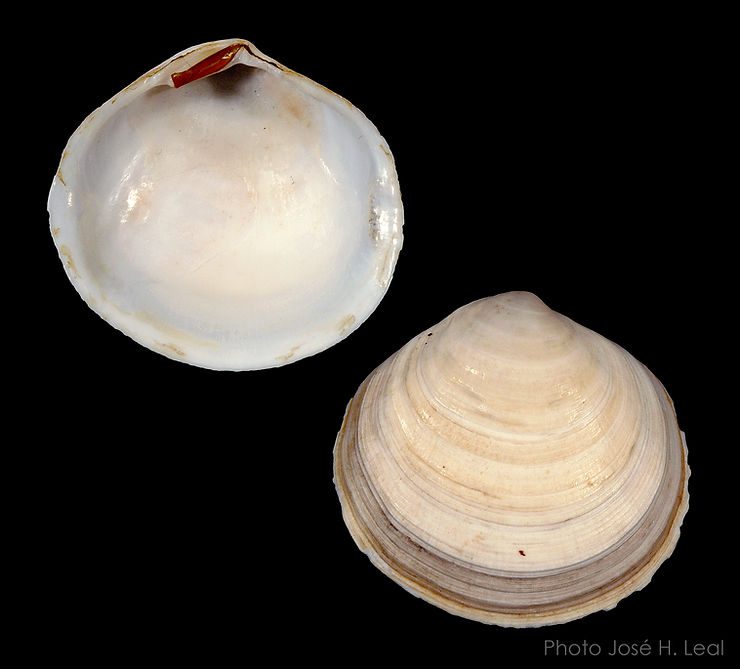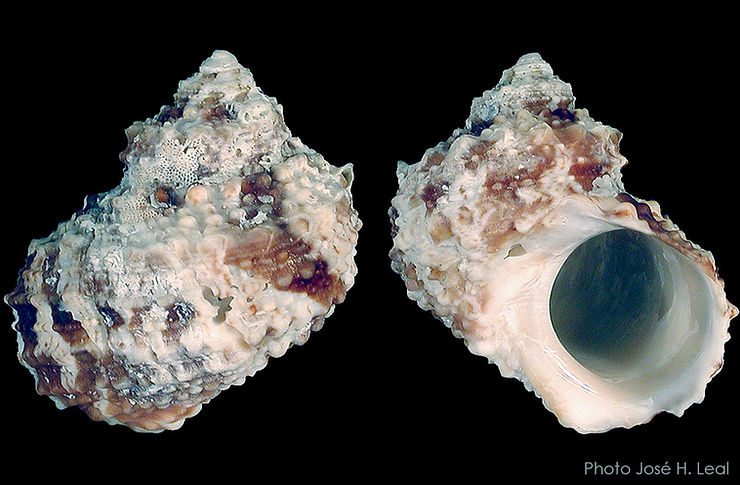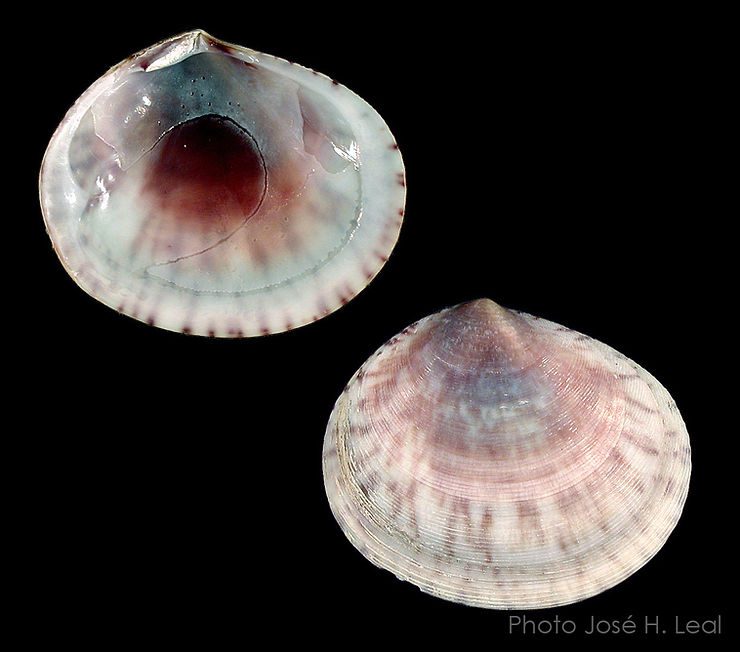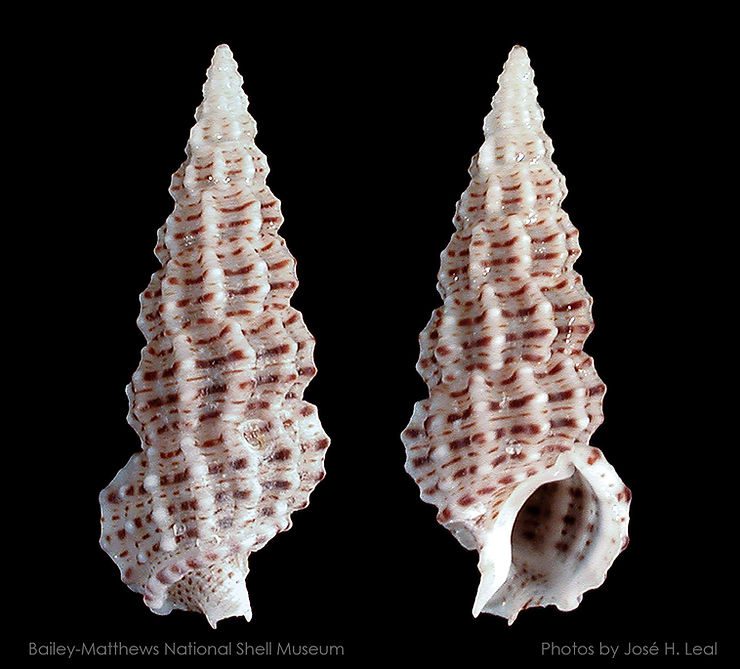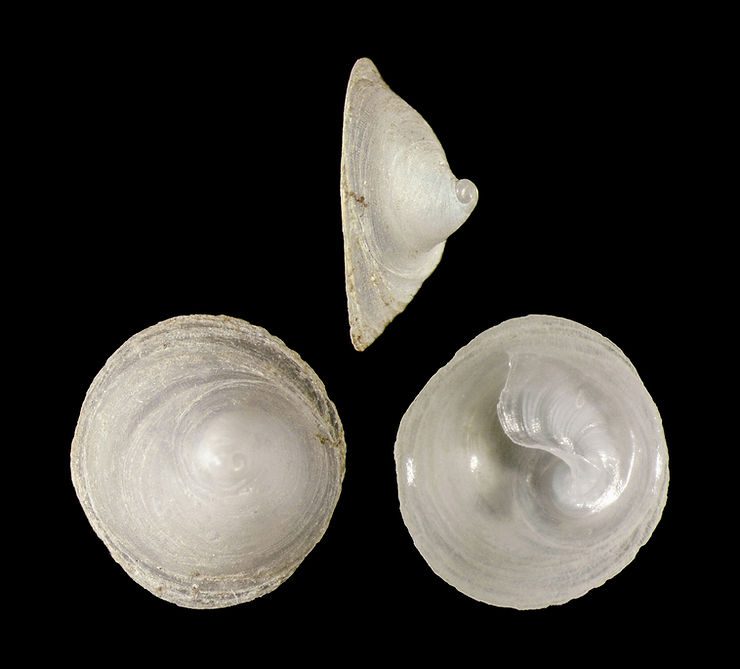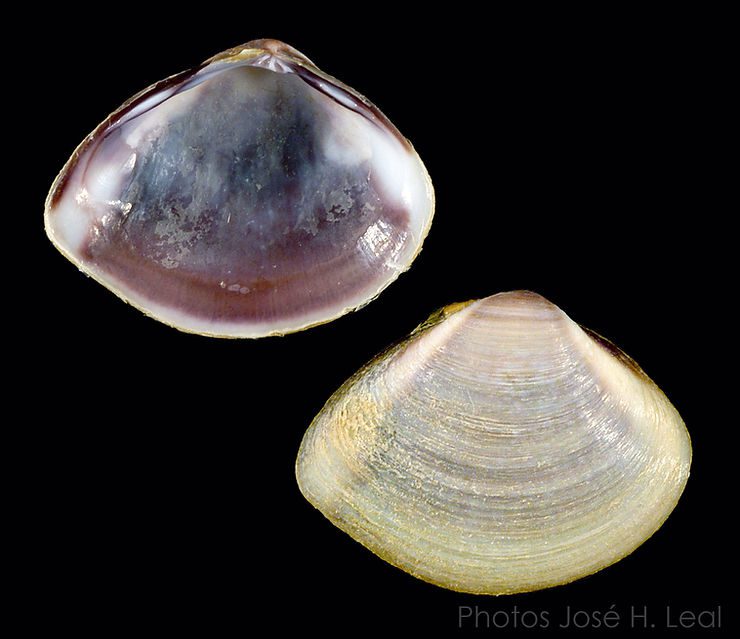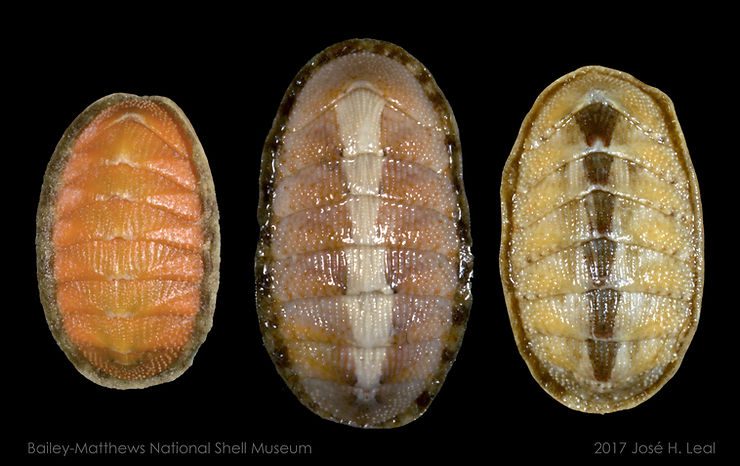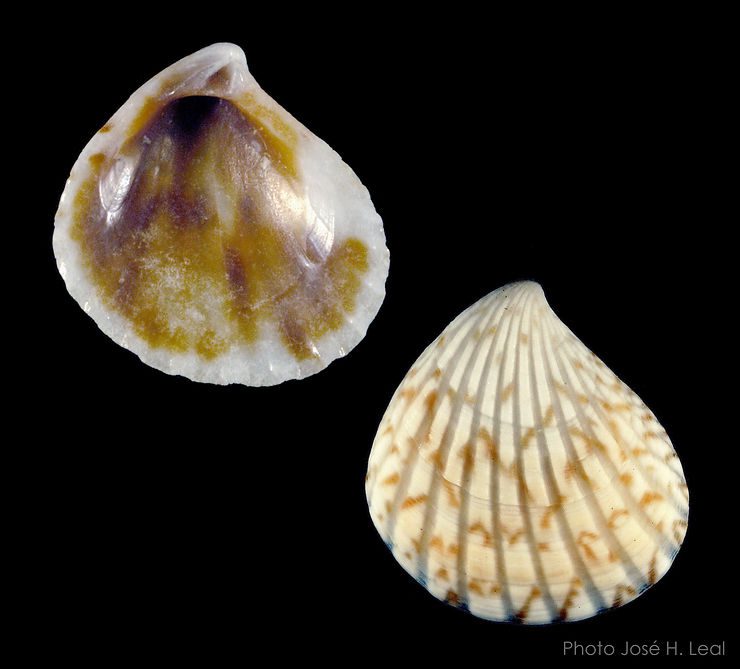
The Flattened Carditid
In the last two weeks I introduced the bivalves Broad-Ribbed Carditid and Three-Tooth Carditid. Today, to complete the conversation about local members of the family Carditidae, I want to “invite to the podium” the Flattened Carditid, Pteromeris perplana (Conrad, 1841). A small bivalve, reaching only about ¼-inch, this species has a very flat shell, a feature indicated in the specific name, the Latin compound word perplana, which translates into “hyper flat”. The shell is triangular, but with a
